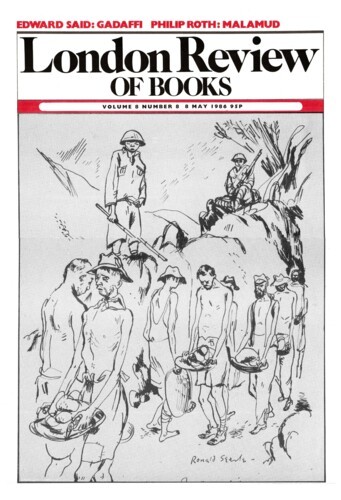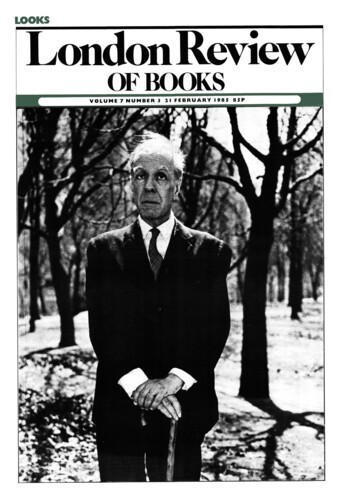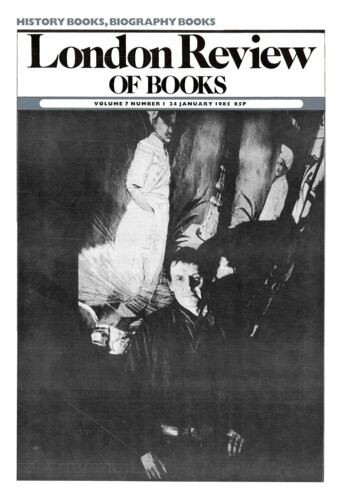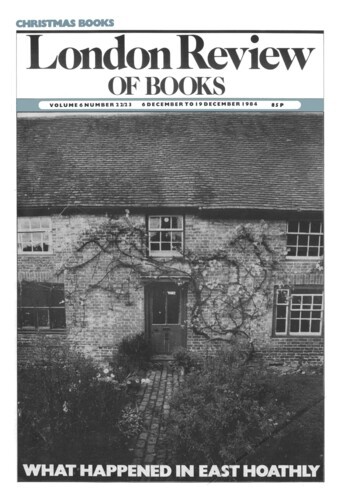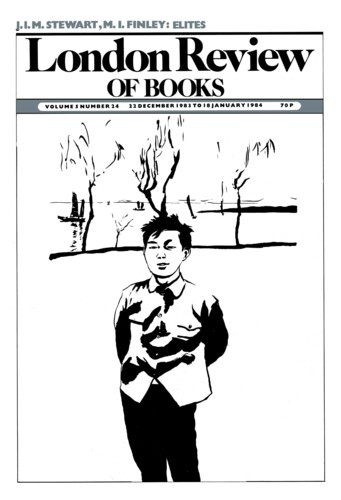Christopher Driver
Christopher Driver has recently resigned the editorship of the Good Food Guide, which he had held since 1969, and is writing a history of British cooking. He is the author of The Exploding University and of The Disarmers.
Trollies
21 February 1985
Unfair to Food
24 January 1985
The Rat Line
Christopher Driver, 6 December 1984
By chance, the evening I took this book to bed for the painful reading expected, I jabbed the tooth of a comb down a fingernail and cried out. As a reminder of what Klaus Barbie was about, not just at the Hotel Terminus in Lyon forty years ago but at the Bolivian Joint Chiefs of Staff headquarters in La Paz as late as 1980, the moment served. An inkling of the more enduring wounds for which Barbie was proud to share responsibility can be gathered from Claudine Vegh’s I didn’t say goodbye, a labour of love rather than literature in which the surviving children of French Jewish deportees talk to a psychiatrist who shared their experience: ‘I didn’t have a youth, I no longer have a mother, I have a sister who needs treatment, a father who hasn’t been able to lead a normal life since he came back. An entire existence ruined.’
Gang of Four
Christopher Driver, 22 December 1983
The gang of four, discoursing melodically and harmonically within the gamut of some five octaves, was a relatively late response to the acoustic properties of the violin family. Once formed, however, a couple of centuries ago, it acquired within our culture a more-than-musical resonance, comparable with the development potential of the novel, the intimacy of the still-life, the proportionality of Georgian domestic architecture, the numinosity of Cranmer’s collects. People who have discovered or been brought up with the string quartet, as listeners but above all as players, generally regard themselves as blessed in this life, and possibly in the next too. Yet outside newspaper and magazine concert notices, usually starved for space or time or both, and outside concert-programme analyses of works to be played, sustained reflection on the composition and performance of quartets is for the most part confined to studies of individual composers, and there overshadowed by discussion of operas, symphonies and other large-scale works. As far as society at large is concerned, all serious music nowadays obeys its own rules, perpetuates its own traditions and keeps its own counsel, to an extent which other generations would have found surprising. Interesting comments on quartet performance are to be found in the music criticism of George Bernard Shaw and Ezra Pound, to name two writers whose main preoccupations lay elsewhere. But in our own day almost all composition, and much performance, is virtually invulnerable to non-specialist critique.
Read anywhere with the London Review of Books app, available now from the App Store for Apple devices, Google Play for Android devices and Amazon for your Kindle Fire.
Sign up to our newsletter
For highlights from the latest issue, our archive and the blog, as well as news, events and exclusive promotions.
